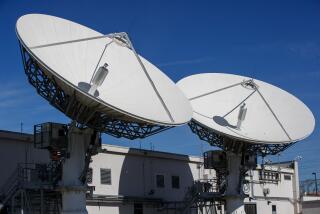Alliance Imaging
Alliance Imaging was one of those medical companies ripe for attack when reform-minded First Lady Hillary Rodham Clinton took the health-care industry and its high costs to task four years ago.
Alliance operates a mobile network of magnetic resonance imaging equipment and, at the time, a Los Angeles-area patient paid as much as $1,700 for an MRI scan.
New laws and pressures on health-care providers pushed down demand and prices for such tests at a critical time for Alliance: It was buying more MRI machines.
Revenue fell, and the Orange County company lost nearly $34 million in 1993 and ’94.
But a confluence of factors in the last two years has helped turn Alliance’s fortunes around.
In the small, competitive segment of the imaging industry, it has built itself into the nation’s biggest mobile MRI operator, providing hospitals and clinics in 36 states with regular visits from one of its 87 units on wheels.
Alliance has restructured its debt and is now poised to grow at a faster clip, with plans to have 100 units in operation by the end of the year.
Wall Street, which has pushed the company’s stock from the $3- to $4-a-share range last year to above $7 in recent weeks, likes what it sees.
“They’ve restructured themselves so they could live under the new conditions,” said William Realyea, an analyst at Josephthal Lyon & Ross in New York.
Most of the country’s MRI machines are located permanently in major metropolitan hospitals and in free-standing clinics, said Richard N. Zehner, Alliance’s chairman.
His company, which has about one-sixth of the mobile market, concentrates on outlying towns as well as on suburban areas where hospitals can’t justify the expense of owning MRI equipment. Alliance sends its mobile units to about 375 customers for hours, days, weeks or months at a time, depending on their needs.
Even some hospitals that can afford MRI machines are giving them up in favor of using outside firms such as Alliance.
The mobile units aren’t cheap. Each costs about $1.6 million, complete with a tractor-trailer and housing for the diagnostic apparatus.
Alliance’s competitors include small groups of investors, often doctors, but these operations tend to be less efficient. The company expects to buy out small operators or manage more MRI units owned by others.
The price to the patient, meanwhile, is now about half what it was before Clinton’s reform effort.
Alliance has responded by trimming operating costs and increasing the number of scans each unit handles, said Terrence White, the company’s chief financial officer.
With expenses mainly fixed, the company said its profitability hinges on raising its scan volume.
Fortunately for the company, technology is producing better imaging machines that allow MRIs to be used for more types of tests besides back and soft-tissue injuries. Now, for instance, the units can detect possible problems in blood vessels, breast tissue and abdominal areas, White said.
With lower scan prices and better machines, he said, physicians are ordering more MRI tests.
More to Read
Inside the business of entertainment
The Wide Shot brings you news, analysis and insights on everything from streaming wars to production — and what it all means for the future.
You may occasionally receive promotional content from the Los Angeles Times.










